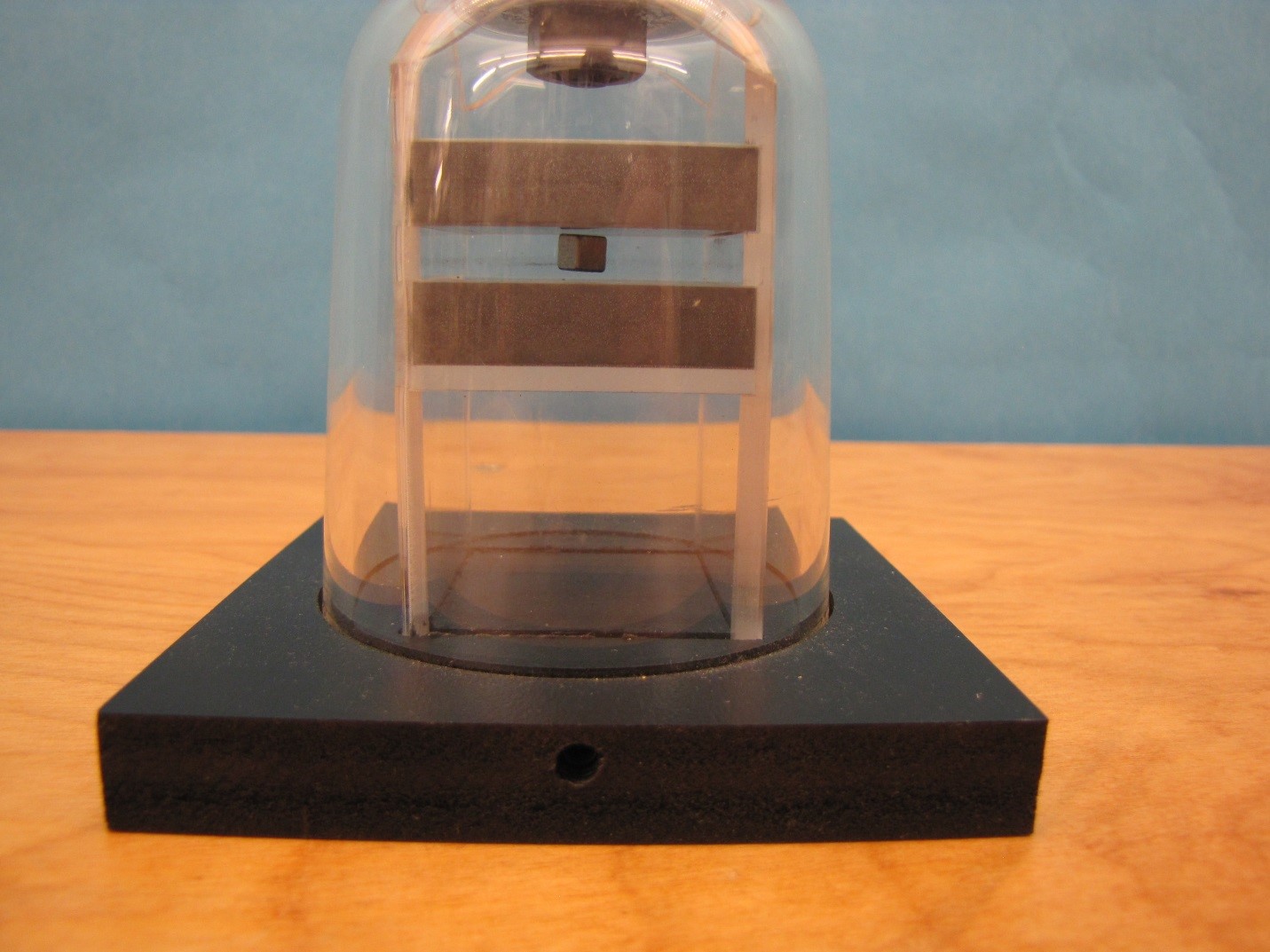Demos: 6A-06 Diamagnetic Levitation

The apparatus consists of two graphite plates with a space between them contained in a see through container. In the space between the plates is a cube shaped magnet, plated in 24K gold. The magnet levitates between the two graphite plates when properly adjusted. The force of gravity on the magnet is counteracted by the ceramic magnetic rings on the top of the apparatus and thus the magnet is at equilibrium. The two graphite plates, limit the magnetic cube to approximately the correct distance from the ceramic magnets above. If it is not adjusted to the correct height, the magnet will not levitate. The property of graphite called diamagnetism makes the cube stable. Diamagnetic substances repel either pole of the magnet. If the cube begins to rise slightly, it comes closer to the upper graphite plate and the graphite repels it downwards. The force is tiny, but it is enough to stabilize the cube. The lower graphite performs a similar function if the cube begins to move downward.
Directions for doing the demo: Place the apparatus in front of the video camera with the graphite plates properly adjusted. Twist the upper hex nuts so that the distance changes between the ceramic magnets and the graphite plates changes. Notice that the magnet does not levitate. Readjust to the original settings and the magnet will now levitate.
Applications: Magnetic Fields, Diamagnetism
Add to Cart | View Cart
Last Updated: Nov 30, 2023 11:25 AM
